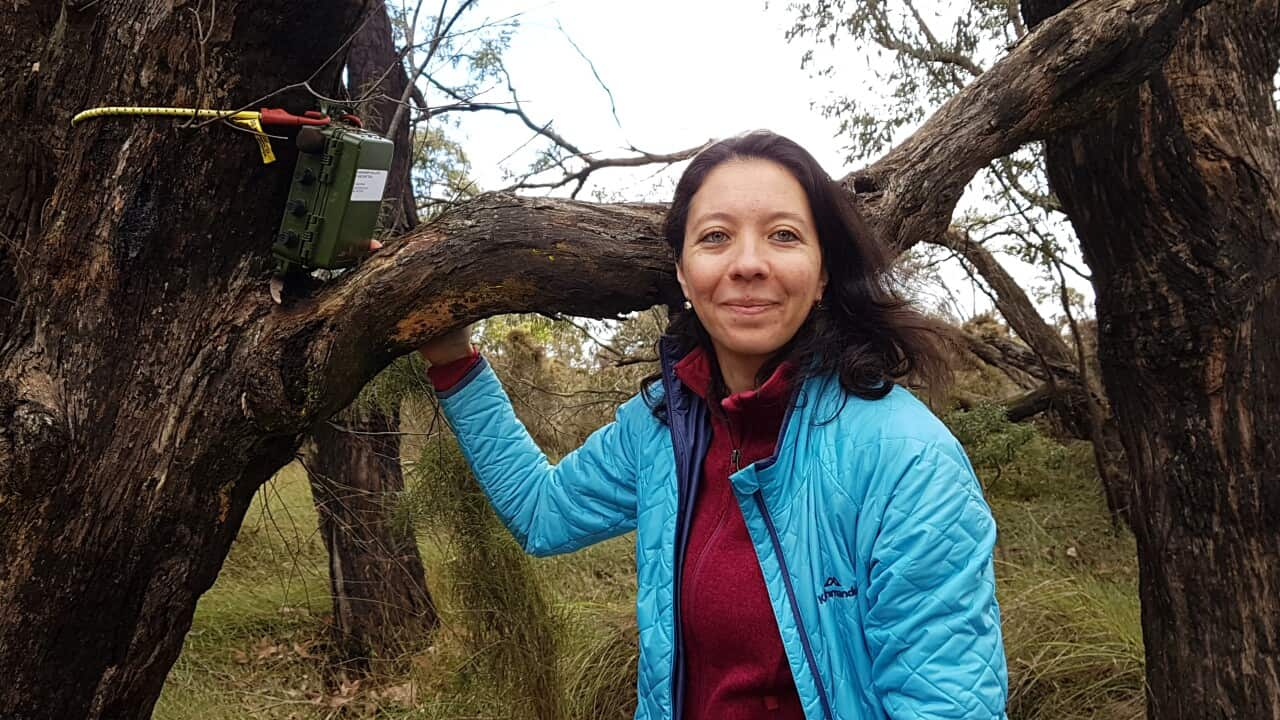The Chilean Australian scientist is leading an initiative to encourage landowners to reforest their farms to improve the habitat of the native marsupial.
Her work comes following a New South Wales
The year-long inquiry found that unless there is urgent government intervention, the koala population of NSW could be extinct by 2050.  The report found the NSW Koala Strategy to be ineffective in protecting enough areas for the marsupials to live.
The report found the NSW Koala Strategy to be ineffective in protecting enough areas for the marsupials to live.

One of the burned koalas rescued during Australia's Black Summer fires. Source: Supplied
In its response, the state government has set out to double the current number of individuals, and some scientists are making efforts to involve farm and forest owners in reforesting their habitats.
Ms Rivera is studying the koala population on the Mornington Peninsula to examine how their numbers are distributed to observe how the fragmentation of their habitat affects them.
Highlights:
- Koalas living in disrupted areas by urban development need to move long distances on the ground, which puts them in serious danger.
- Biological studies reveal that the koala population in New South Wales could be extinct in just 30 years.
- A Chilean-Australian biologist has started a project to rehabilitate their habitat after analysing their population, by recording their nocturnal sounds.
In natural conditions, where their habitat has not been fragmented by urbanisation, a male koala usually travels two hectares to live and reproduce.
But in fragmented areas, they need to cover an area of nine hectares, which puts them in serious danger.
"They have to travel and move on the ground and they expose themselves to the dangers of attacks from domestic animals or livestock, or to injuries because they have to go through structures or because they are run over by vehicles,” she said.
To study the behaviour of koalas on the Mornington Peninsula, Ms Rivera placed 130 sound recording devices throughout the trees to record their nocturnal conversations, through which males and females communicate to mate.
"Each koala produces a different sound and that is perceived in the recordings, it can be deeper, higher, the level of the frequency changes, each one has its own signal."
The biologist collected the recordings for seven days and in some of them, she captured how the noise from road traffic covered up the sounds of the koalas, hindering their communication.
The recordings also collected human voices, fireworks and various machinery.
Despite the bleak prospects for koalas living near inhabited areas, Ms Rivera has found hope through interest within the community to help. In the Mornington area, 74 per cent of the land is privately owned and the rest belongs to the municipality, so she is confident that all parties will be able to improve the conditions of the forest.
In the Mornington area, 74 per cent of the land is privately owned and the rest belongs to the municipality, so she is confident that all parties will be able to improve the conditions of the forest.

The Mornington Peninsula Koala Conservation group planing trees. Source: Arthurs Seat
"The idea is to create a type of corridor or bio-link (...) it is a small project at the moment, but we hope it will continue to grow with the support of the community and with donations.
“What we are going to do is get closer to the dreams of properties to plant native trees that koalas prefer in that area. The sector already has koalas, I have heard them in the recordings, and we want to help people to revegetate the area and create vegetation links.”
About 25 homeowners have already signed up for the revegetation project which aims to plant some 25,000 trees by 2021.

